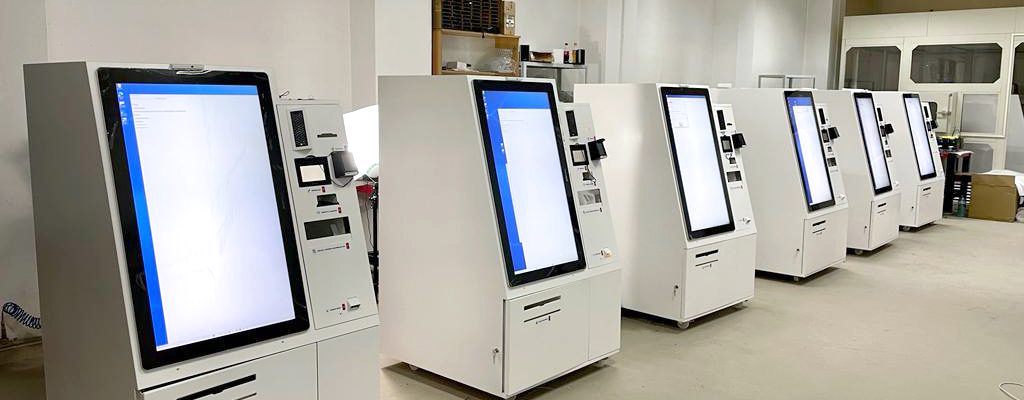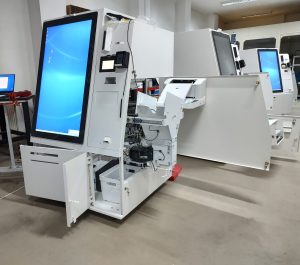

A kiosk is an interactive terminal used in a wide variety of purposes, allowing customers to order, pay, check-in, and perform many other operations without the need for direct interaction with employees. This automated process makes transactions faster and more efficient for both customers and businesses.
History
Kiosks have existed in various forms for hundreds of years, starting as simple stalls or booths where people sold different products. The first modern vending machines date back to the 1880s, and the first ATMs (automated teller machines) appeared in the 1960s. Over time, kiosks have evolved from “analog” devices to sophisticated digital terminals. Today, digital kiosks automate the processes of ordering and providing goods and services, offering an enhanced user experience.
Types of Kiosks
The construction and functionality of kiosks vary depending on the business sector and specific purpose. Examples of kiosk types include:
- Banking: ATMs for banking operations.
- Payments: Kiosks for bill payments and other financial transactions.
- Retail: Self-checkout terminals and point-of-sale kiosks.
- Restaurants: Interactive self-order kiosks and quick service terminals.
- Healthcare: Self-check-in kiosks at doctors’ offices and prescription payment kiosks at pharmacies.
- Transportation: Check-in and ticket kiosks in airports and train stations.
- Parking: Payment kiosks for parking structures.
- Directories: Digital signage kiosks for navigation in stores.
- Advertising: Advertising kiosks in various locations.
- Ticketing: Kiosks for issuing tickets for events and transportation.
Construction
A terminal consists of a housing, generally made of metal, but also from plastic materials such as acrylic, polycarbonate, ABS, ACM, or PVC, and sometimes even wood or glass. The housing contains the electronic devices necessary for the terminal’s operation, such as a PC, touchscreen display, surveillance cameras, audio system, thermal or laser printers, card readers, barcode scanners, document scanners, and POS systems.
The metal housing, solid and stable, is designed to withstand intense use and protect the internal components. Ergonomic and aesthetic design is important for easy and pleasant use. Depending on needs, the housing can include additional elements, such as shelves for products, code scanners, mobile POS systems, alert systems, and advertising panels.
Advantages of Using Digital Terminals in 2024
In 2024, the use of self-service terminals continues to grow due to the numerous advantages they offer:
- Automation: Eliminating human errors, ensuring greater accuracy in operations.
- 24/7 Availability: Terminals are available around the clock, providing constant access to services.
- Improved Customer Satisfaction: Reducing wait times and offering a more pleasant user experience.
- Accessibility: Can be installed both indoors and outdoors, ensuring easy access for users.
- Rapid Information: Quickly provides useful and relevant information to users.
- Queue Reduction: Facilitates payments and other operations, eliminating lines at counters.
- Cost Reduction: Self-service terminals reduce the need for staff, thus lowering operational costs.
- Enhanced Branding: Terminals can be customized to reflect the business brand, contributing to a coherent and modern brand image.
The evolution of kiosks from simple stalls to advanced digital terminals has transformed how we interact with various services. In 2024, self-service terminals are essential for streamlining operations and enhancing customer experience, offering numerous benefits to both users and businesses.
